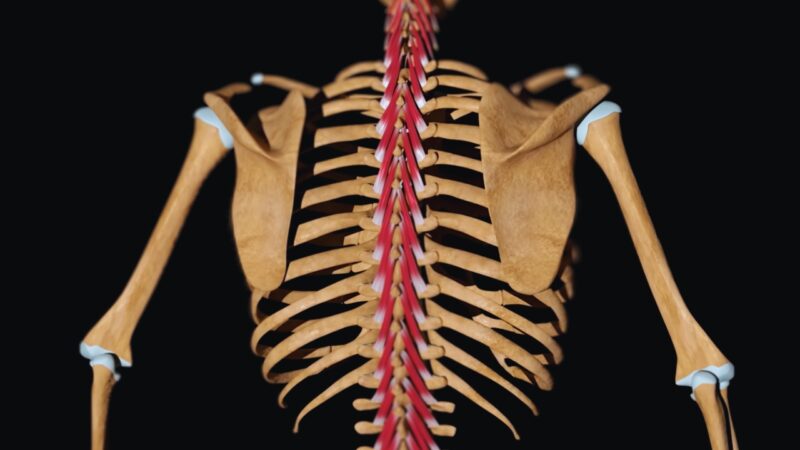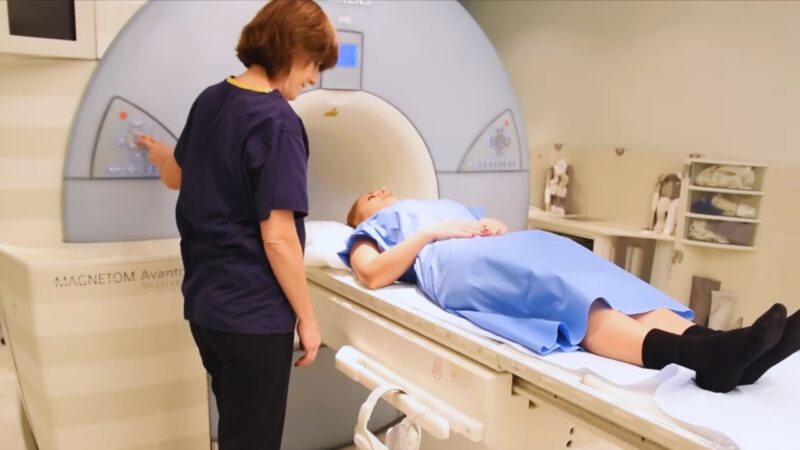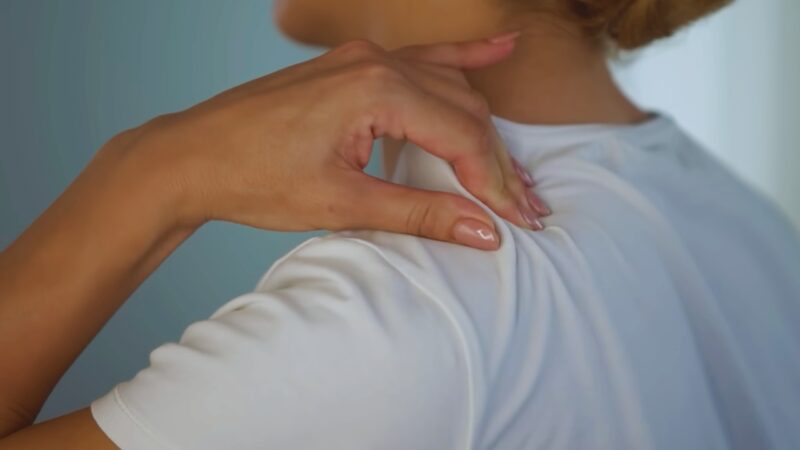Muscle stiffness, particularly in the back, can lead to chronic pain and stiffness that limits daily activities.
People might attribute their back pain to other conditions, such as herniated discs or structural problems, without considering the possibility of muscular issues.
A common cause of back stiffness is lumbar strain, which can result from everyday activities like lifting a heavy object incorrectly.
This strain leads to inflammation and tightness in the muscles and ligaments supporting the spinal column.
Addressing these muscular problems with appropriate treatments, such as heat therapy to increase blood flow, can often alleviate the pain.
Muscle Stiffness and Back Pain

Stiff muscles are often overlooked as a cause of back pain because symptoms are frequently misattributed to more severe structural issues like herniated discs.
Muscle stiffness can significantly contribute to back pain. Common causes include exercise, injuries, and medical conditions like polymyalgia rheumatica.
Symptoms of Muscle Stiffness and Back Pain
- Aches or pain in shoulders and neck
- Limited range of motion
- Dull pain and stiffness in the back
Treatments for Muscle Stiffness
- Regular stretching
- Over-the-counter anti-inflammatory medications
- Proper exercise techniques
Preventative Measures
- Gradual increase in exercise intensity
- Ergonomic work setups
- Proper body mechanics during activities
Muscle stiffness is often an overlooked cause of back pain. Recognizing and addressing it can lead to significant improvements in overall well-being.
Anatomy of the Back: Muscles and Pain

The back’s major muscle groups include the extensors, flexors, and obliques. Extensor muscles, such as the erector spinae, are crucial for standing and lifting. These muscles run along the back of the spine.
Flexor muscles are located in the front of the spine. They help with bending forward, lifting, and controlling the lower back’s movement.
Oblique muscles, found on the sides of the spine, support rotational movements and side bending. Each group works in concert to maintain posture and enable various types of movements.
How Muscle Tension Contributes to Pain
Muscle tension often results from stress, overuse, or injury. This tension causes stiffness, leading to restricted movement and pain.
For instance, a lumbar strain results from injury to the back muscles and ligaments, causing notable discomfort.
Chronic tension can also stem from psychological factors such as depression and anxiety, contributing to pain in the neck and upper back, which can also lead to headaches. Addressing muscle tension through appropriate treatments can alleviate pain and improve mobility, preventing future discomfort and injuries.
Common Causes
Poor Posture and Its Impact
Poor posture can place undue strain on the muscles of the back. When a person consistently maintains an improper posture, the muscles can become overworked and stiff. This is especially common with forward head posture and slouching. It disrupts the spine’s natural alignment, causing the muscles to work harder to support the body’s weight.
Not only does this cause immediate discomfort, but chronic poor posture can lead to long-term muscle imbalances. These imbalances make the muscles more susceptible to pain and stiffness. Corrective measures, such as ergonomic adjustments and posture exercises, can mitigate these effects.
Effects of Sedentary Lifestyle
A sedentary lifestyle can also lead to stiff muscles and back pain. Inactivity allows muscles to weaken and lose flexibility. This is particularly problematic for the lower back and its supporting structure. When the back muscles are not actively engaged, they can become tight and less capable of supporting routine movements.
Periods of prolonged sitting, often coupled with poor posture, exacerbate these conditions. Regular physical activity, including stretching and strengthening exercises, is essential to maintain muscle health and prevent stiffness. Without these interventions, stiffness can progress and become a constant source of discomfort.
Injury-Related Muscle Stiffness

Injuries to the back, such as lumbar strains and sprains, can cause significant muscle stiffness. These injuries often occur from heavy lifting, sudden movements, or accidents. The resulting damage to the muscles and ligaments leads to inflammation and tightening of the back muscles.
This can create a cycle where the stiffness further restricts movement, complicating the healing process. Immediate treatment typically involves rest, ice, and sometimes physical therapy. Understanding and managing these injuries properly is crucial to preventing chronic stiffness and recurring pain.
Stress-Induced Muscular Tension
Stress is another common cause of muscle stiffness. When under stress, the body releases cortisol and other hormones, which can cause the muscles to tense up. Chronic stress keeps the muscles in a state of tension, leading to stiffness and pain, particularly in the back.
Repetitive overstress on the joints can lead to the formation of ganglion cysts on the back, exacerbating discomfort and pain.
Stress management techniques, such as mindfulness, relaxation exercises, and counseling, can significantly reduce this type of muscle tension. Addressing the source of stress and incorporating relaxation strategies can help alleviate this stiffness. Ignoring stress can leave muscles in a perpetually strained state, contributing to ongoing back pain.
Diagnosing

Healthcare professionals begin with a detailed medical history of the patient, exploring any recent injuries or underlying conditions that might contribute to muscle stiffness. Observation includes examining the patient’s posture and gait and looking for asymmetries or abnormalities.
Palpation of the back muscles helps identify areas of tightness, tenderness, or spasms. Specific movements and stretches are used during the range of motion tests to determine any limitations in flexibility and muscle performance.
Manual muscle testing assesses the strength and endurance of the back muscles. An absence of neurological symptoms such as numbness or tingling often indicates a muscular origin rather than nerve damage.
Trigger point identification involves locating points in the muscles that cause pain when pressed, further pinpointing the stiff muscles responsible for back pain.
Imaging and Diagnostic Tools

When physical examination alone is insufficient, doctors may turn to imaging techniques. MRI scans are particularly useful for detailed images of soft tissues, including muscles, ligaments, and intervertebral discs.
X-rays can help rule out bone abnormalities, fractures, or conditions like ankylosing spondylitis, which might mimic muscle-related back pain.
Ultrasound imaging can visualize muscle and tendon integrity, offering real-time insights into any muscular anomalies.
Electromyography (EMG) measures the electrical activity in muscles, identifying abnormalities in muscle contraction and ruling out nerve-related issues.
CT scans might be used, albeit less frequently, to get a more comprehensive view of the spine structure. Each of these tools complements the physical examination, ensuring a thorough diagnostic process.









